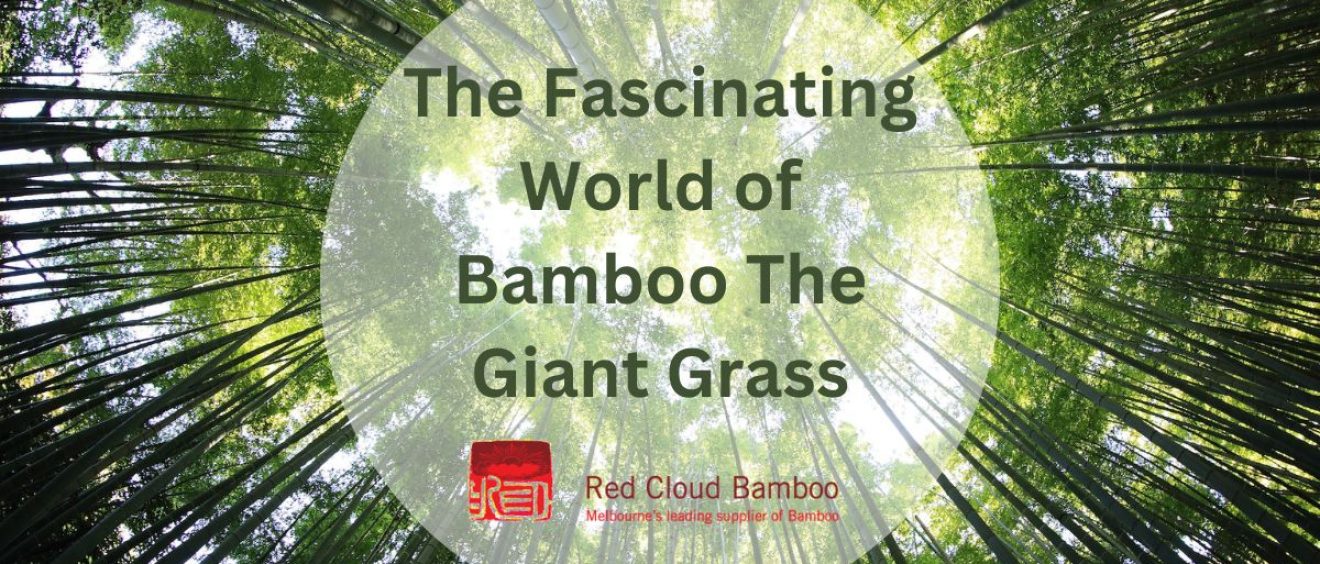
The Fascinating World of Bamboo: Nature’s Towering Grass
At first glance, it’s easy to mistake bamboo for a tree. Its height, its woody stalks, and its strength all suggest timber. But here’s the surprise: bamboo is actually the world’s largest grass.
Belonging to the Bambusoideae subfamily, bamboo spans more than 1,500 species across continents, climates, and cultures. From lush Asian forests to modern Australian gardens, this giant grass is cherished not only for its beauty but also for its strength, sustainability, and astonishing versatility.
Is Bamboo a Tree?
No, bamboo is not a tree.
Despite its towering form and timber-like hardness, bamboo is classified as a perennial grass. What sets it apart from most grasses is the lignified, or woody, nature of its culms (canes), which allow it to grow upright like a tree.
This unique botanical profile is what makes bamboo so special: it’s fast-growing like grass, strong like wood, and regenerative like few other plants.
A Diverse Giant: Species of Bamboo
There are over 1,000 known species of bamboo, ranging from temperate runners to tropical giants. Two notable varieties include:
- Bambusa vulgaris – Often called the bamboo tree, this species can soar past 20 metres in height and forms dense groves in tropical and subtropical zones.
- Phyllostachys nigra (Black Bamboo) – A fast-spreading running bamboo with dramatic steely-blue to black culms, popular in ornamental landscaping.
With colours ranging from bright green to golden yellow, and textures from silky smooth to ruggedly ridged, bamboo offers something for every garden and every purpose.
Growing Bamboo: How the Giant Grass is Cultivated
Bamboo cultivation begins with rhizome segments, spaced 1–2 metres apart. These root systems steadily expand to form lush clumps or spreading groves depending on the species.
Some of the largest varieties require support as they shoot upwards—sometimes growing over 3 feet in a single day during peak seasons.
Proper spacing, pruning, and structural supports help bamboo reach maturity in 3–5 years, after which it can be sustainably harvested.
Fun Fact: Bamboo harvesting doesn’t kill the plant. Cutting mature culms stimulates new growth from the rhizome, allowing continuous yields for decades.
Environmental Benefits: Why Bamboo Is a Sustainability Star
Bamboo’s fast growth isn’t just impressive — it’s incredibly beneficial for the environment:
- Carbon Sequestration: Bamboo absorbs CO₂ at a rapid rate and stores more carbon over time than many tree species.
- Erosion Control: Dense rhizome networks stabilize soil, making bamboo ideal for areas prone to erosion or landslides.
- Low Input: Bamboo requires little fertiliser, rarely needs pesticides, and regenerates naturally without replanting.
- Sustainable Yield: Unlike trees, bamboo can be harvested without replanting, offering a renewable supply of timber-like material.
In short, bamboo is a high-impact, low-maintenance crop ideal for a carbon-conscious future.
Conclusion
Bamboo is more than just a plant, it’s a blueprint for sustainable living. With unmatched versatility, minimal environmental impact, and centuries of proven usefulness, bamboo is gaining recognition as a future-forward solution for green building, design, manufacturing, and land rehabilitation.
Whether you’re planting it in your backyard or building with it on a large scale, bamboo offers a smart, stylish, and sustainable choice.
Discover the incredible world of bamboo and unlock its limitless potential.
Join us at Red Cloud Bamboo, your trusted partner in all things bamboo. Call Dale on 03 9551 8559 or visit our blog for more insights. Let’s embrace the resilience and beauty of bamboo together.

